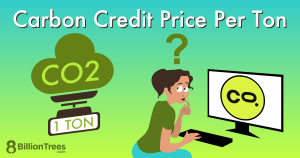Carbon Credit Exchanges Still Working
As the world struggles to combat climate change, more and more companies are pledging to reduce their greenhouse gas emissions as much as possible. However, many of them will be unable to do so without some form of financial incentive. A cap-and-trade program is one option for these companies. This type of system limits the amount of CO2e a company can emit each year and sets a price for those excess credits. Another option is to voluntarily offset their emissions. This is called the voluntary market and works differently than the regulatory market.
In this market, the carbon credit exchange are not mandated but instead are purchased by businesses and individuals that want to demonstrate their environmental consciousness. These people might be a company who wants to avoid a fine or tax from their government, a traveler who is concerned about their impact on the environment, or an individual who wants to offset their own emissions.

The voluntary market is a thriving sector, and it has grown exponentially in recent years. It’s fueled by a number of reasons, including increasing corporate net-zero goals and global interest in meeting the Paris Agreement’s climate goals. While the market is expanding, it’s also faced challenges. For one, a significant amount of zombie credits flooded the market in 2021, amplifying concerns over underlying quality issues.
Are Carbon Credit Exchanges Still Working?
Blockchain-enabled carbon tokens can help mitigate this issue, but buyers should be aware of how projects are managed. These tokens can also be used as a means to demonstrate ownership of a project, which can be a big deal for a project’s stakeholders.
Carbon credit exchanges are still operating and continue to play an important role in the fight against climate change. These exchanges provide a marketplace for buying and selling carbon credits, which are used to offset greenhouse gas (GHG) emissions.
One of the largest carbon credit exchanges in the world is the European Union Emissions Trading System (EU ETS). The EU ETS has been in operation since 2005 and covers more than 11,000 power stations and industrial plants across 31 countries. It has been successful in reducing GHG emissions in the European Union and is considered a model for other countries.
In addition to the EU ETS, other carbon credit exchanges have been established around the world, including in the United States, Japan, and China. These exchanges allow businesses and individuals to purchase carbon credits to offset their carbon footprint, while also supporting projects that reduce GHG emissions.
One example of a successful carbon credit exchange is the California Carbon Market. This exchange was established in 2013 as part of California’s efforts to reduce GHG emissions. It operates under a cap-and-trade system and has been effective in reducing emissions from the energy sector.
However, there have also been challenges and criticisms of carbon credit exchanges. Some have raised concerns about the integrity of carbon offset projects and the potential for fraud. Others have criticized the exchanges for not doing enough to reduce GHG emissions and for allowing businesses to continue emitting carbon dioxide without addressing the root causes of the problem.
Despite these challenges, carbon credit exchanges remain an important tool in the fight against climate change. They provide an economic incentive for businesses to reduce their carbon footprint and invest in cleaner technologies. With the growing awareness of the need to reduce GHG emissions and address climate change, the role of carbon credit exchanges is likely to become even more significant in the coming years.
